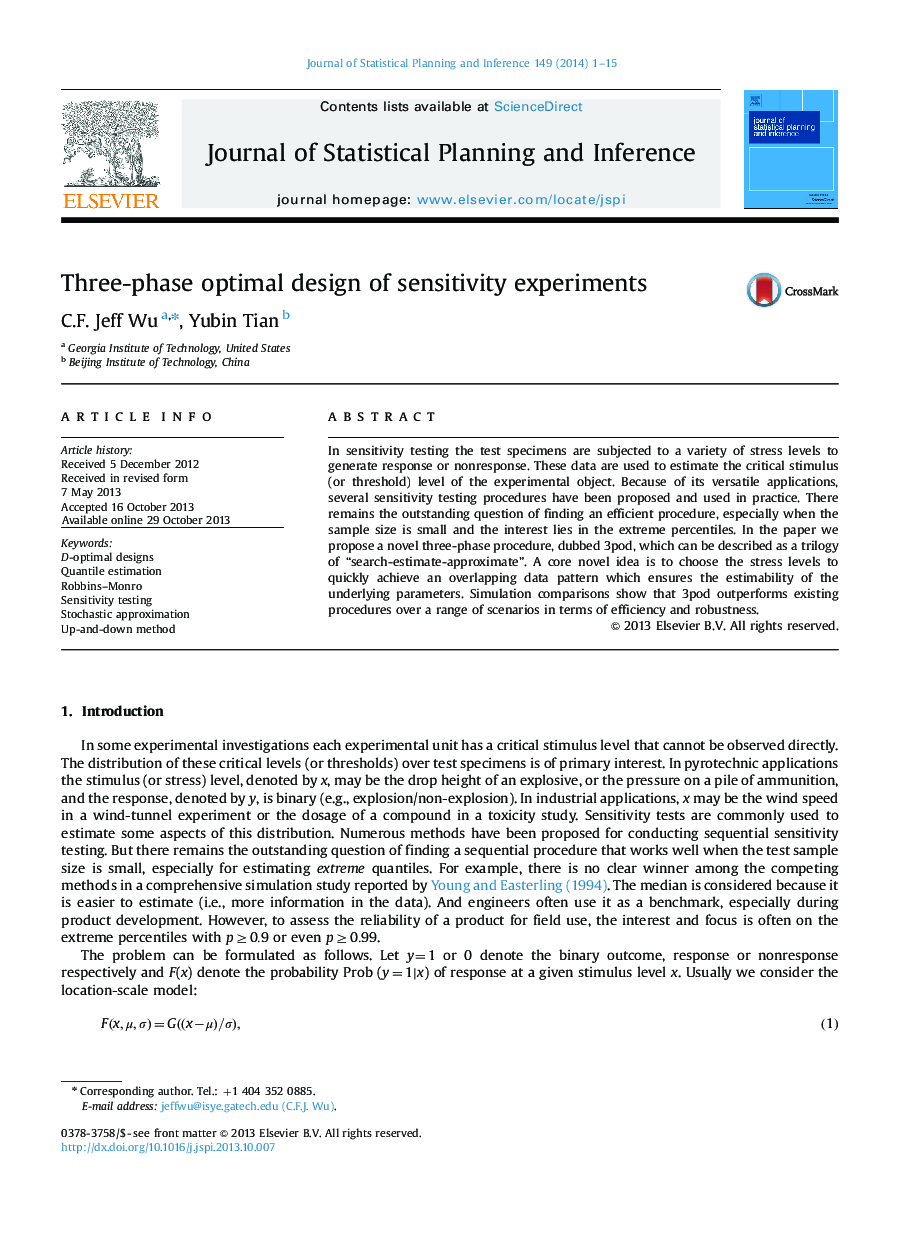| Article ID | Journal | Published Year | Pages | File Type |
|---|---|---|---|---|
| 1148167 | Journal of Statistical Planning and Inference | 2014 | 15 Pages |
•Sensitivity testing is common in pyrotechnics, bioassays, toxicity study.•A sequential procedure called 3pod is proposed.•It consists of three stages: search–estimate–approximate.•Simulation studies show that it generally out-performs all key competitors.•Competitors include Neyer's D-optimal test, up-and-down, Robbin–Monro–Joseph.
In sensitivity testing the test specimens are subjected to a variety of stress levels to generate response or nonresponse. These data are used to estimate the critical stimulus (or threshold) level of the experimental object. Because of its versatile applications, several sensitivity testing procedures have been proposed and used in practice. There remains the outstanding question of finding an efficient procedure, especially when the sample size is small and the interest lies in the extreme percentiles. In the paper we propose a novel three-phase procedure, dubbed 3pod, which can be described as a trilogy of “search-estimate-approximate”. A core novel idea is to choose the stress levels to quickly achieve an overlapping data pattern which ensures the estimability of the underlying parameters. Simulation comparisons show that 3pod outperforms existing procedures over a range of scenarios in terms of efficiency and robustness.
